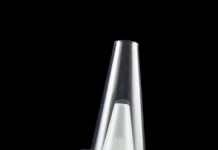In the windswept lands of Denmark, where the echoes of Viking raids still linger in the mists of time, the crafting of Viking axes stands as a testament to the ingenuity and craftsmanship of the Norse people. From the dense forests to the rugged shores, the materials used in the construction of Viking axes played a crucial role in shaping these iconic weapons. In this article, we delve into the rich tapestry of materials utilized for Viking axe construction in Denmark, exploring their properties, significance, and enduring legacy.
- Iron: Iron was the primary material used in the crafting of Viking axe heads in Denmark. Extracted from bog iron deposits found throughout the region, this raw material was smelted and forged by skilled blacksmiths into axe heads of various shapes and sizes. The abundance of iron ore in Denmark ensured a steady supply for the burgeoning axe-making industry, allowing for the production of high-quality axes capable of withstanding the rigors of combat and everyday use. Iron axe heads were renowned for their durability and resilience, making them prized possessions among Viking warriors and craftsmen alike.
- Steel: While iron was the predominant material for Viking axe heads, some axes were crafted from steel, a stronger and more durable alloy. Steel axe heads were typically produced through a process of folding and forge welding layers of iron and carbon-rich materials, resulting in a blade with superior edge retention and resilience. Although steel was less common than iron due to the higher cost and complexity of production, Viking axes forged from this alloy were highly prized for their sharpness, strength, and resistance to wear and deformation.
- Wood: In addition to metal, wood played a vital role in Viking axe construction, serving as the material for axe handles or hafts. Denmark’s abundant forests provided ample resources for this purpose, with ash, oak, and beech being among the most commonly used woods. Ash was favored for its strength, flexibility, and shock-absorbing properties, making it an ideal choice for axe handles. Oak, with its dense grain and durability, was also prized for its resilience and longevity, while beech offered a balance of strength and workability, making it suitable for both functional and decorative axes.
- Leather: Leather was often used in Viking axe construction to fashion protective sheaths or covers for the axe head. These leather wrappings helped to prevent corrosion and rust, as well as to protect the edge of the blade during transport and storage. Additionally, leather straps or thongs were sometimes used to secure the axe head to the wooden haft, ensuring a secure and reliable connection that could withstand the rigors of combat.
In Denmark, the crafting of Viking axe was a testament to the resourcefulness, skill, and innovation of the Norse people. From the smelting of iron ore to the shaping of wooden hafts, each material used in the construction of Viking axes played a crucial role in the creation of these iconic weapons. As we unravel the mysteries of Viking craftsmanship, we gain a deeper appreciation for the materials that formed the foundation of Denmark’s rich heritage and enduring legacy in the annals of Viking history. Viking axe for sale
Top of Form
























![InstaPro APK Download Latest Version 2023 [Anti Ban]](https://olo.my.id/wp-content/uploads/2023/10/instapro-100x70.jpg)

